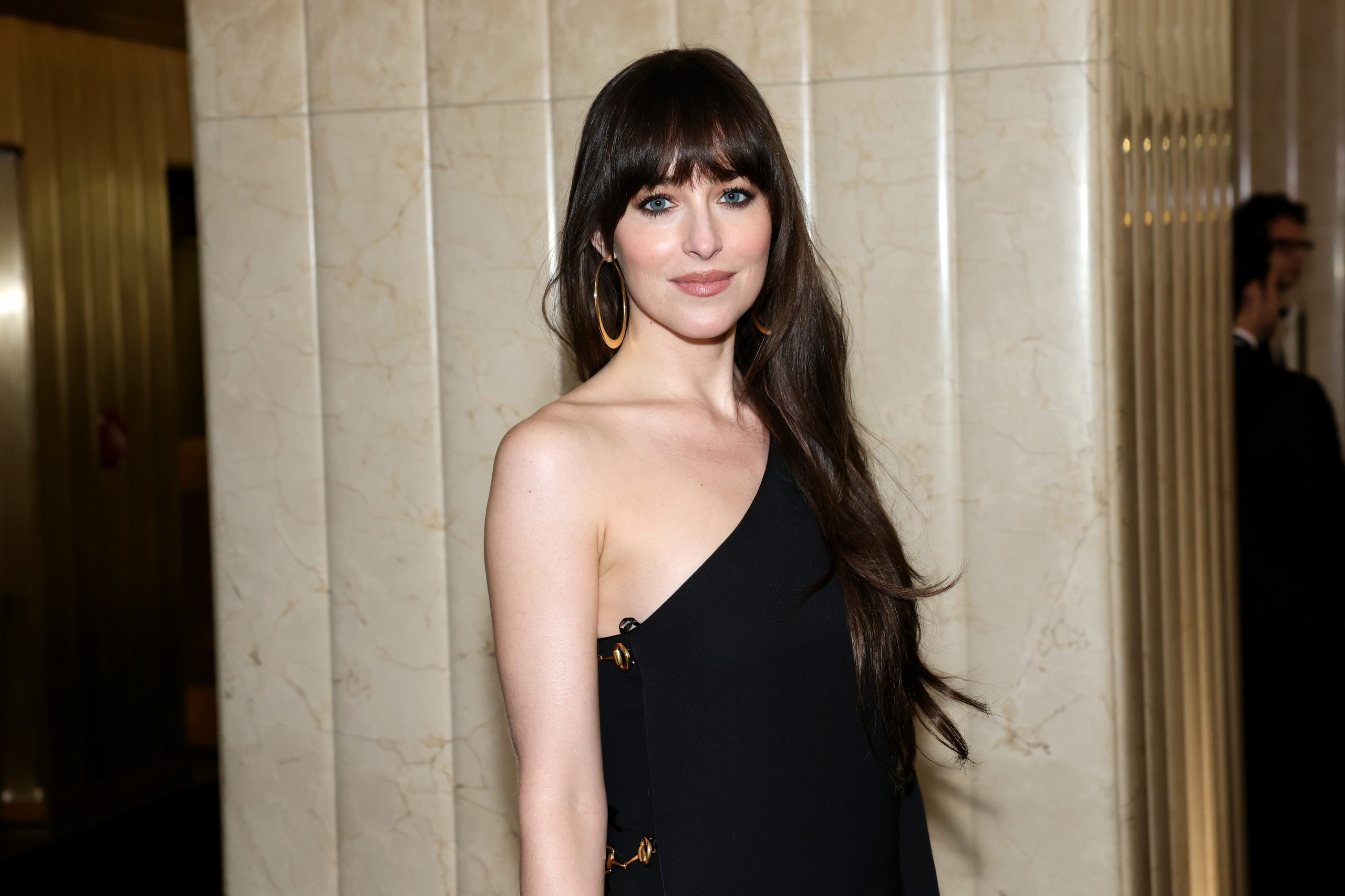“ I’m a. Dorothy’s friend. This is one of the many code expressions used by the LGBT+ community to designate themselves as a member and thus show their rainbow paw. This circumlocution comes from the movie The Wizard of Ozreleased in 1939, where Judy Garland plays the character of Dorothée Gale and sings ” Somewhere over the rainbow “. Since the actress is perceived as a gay icon, designating herself as her friend allows her to recognize each other among peers and thus escape the criminalization of homosexual acts, illegal in the United States until 2003 (this decriminalization began with Illinois in 1961 , state by state, until Lawrence v. Texas repealed all remaining laws against same-sex sexual activity in 2003.) France decriminalized homosexuality on August 4, 1982 and stopped considering it a pathology psychiatry in 1992. To go from the shadows to the lights of the rainbow, LGBT+ communities have struggled, in the streets, but also in art, as illustrated by the exhibition ” Over the Rainbow of the Center Pompidou, in Paris from 28 June to 13 November 2023.

How LGBT+ artists reclaim their representations of the 20thAnd century to today
While recently in France we have had the right to exhibits” HIV/AIDS, the epidemic is not over! » at Mucem from December 2021 to May 2022 at Mucem, « Presentations » at the Palais de Tokyo from February to May 2023, or « Sarah Bernhardt, And Woman Made the Star (which notably shows his relationship with the painter Louise Abbéma) from April to August 2023, it is the turn of another major institution to propose a rainbow exhibition. Through ” Over the Rainbow », the Center Pompidou shows the turning point in LGBT+ visibility that took place in art starting from the second half of the 19th century.And century.

As soon as you enter, a chronological frieze allows you to better understand the social and historical context in which these artistic and political representations take place. Starting point: it was in 1868 that the writer and activist Karl-Maria Kertbeny first used the terms ” homosexual ” AND ” heterosexual “. We then discover works from the beginning of the 20th centuryAnd century, including the sublime oil on canvas Women with doves (1919) by the painter Marie Laurencin who depicts herself wearing a tie, embraced by the stylist Nicole Groult. Or the table By the sea (1912) by Romaine Brooks representing a heroine in men’s clothing, an androgynous and melancholic dandy style. The American painter notably maintained a fifty-year relationship with Natalie Clifford Barney, who holds the ” Temple of Friendship », a sort of lesbian literary salon.
Furthermore, we can learn more about the Danish painter Lili Elbe (1882-1931), one of the first trans women to have benefited from sex reassignment surgery (what the film tells danish girl which Eddie Redmayne regrets having taken), during a magnificent portrait made by his wife Gerda Gottlieb in 1922. But also on the painter Michel-Marie Poulain (1906-1991), one of the first French transgender celebrities. We also discover Vander Clyde Broadway, a charming American tightrope walker and trapeze artist who officiated among other things in Paris under the name of Barbette, immortalized by Man Ray through hypnotic shots.
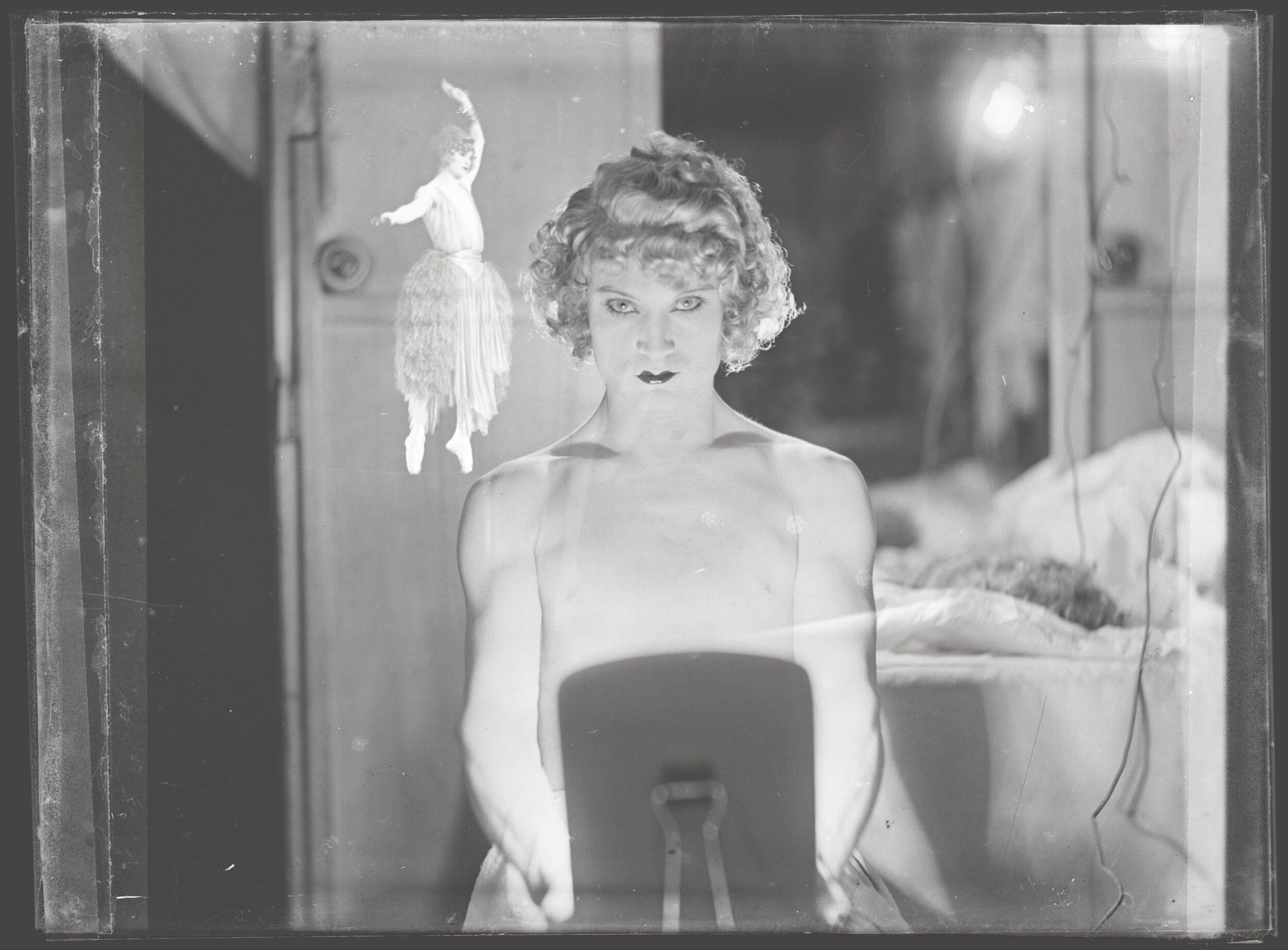
The HIV/AIDS Epidemic as a Political and Artistic Catalyst
After the works of Jean Cocteau, Jean Boullet, Jean Genet (yes, everyone was called Jean at the time), Tom of Finland, Pierre Moulinier, or even Pierre and Gilles, the exhibition focuses on how the HIV/AIDS epidemic he mobilized the community politically and artistically. However small, the wrapper of a condom thus strikes the spirits thanks to the incisive phrase PROTECT ME FROM WHAT I WANT (1985) written by American conceptual artist Jenny Holzer (and immortalized in a song by the queer group Placebo, of which I’m also a fan). More monumental but just as touching, a wall of photocopies Safe/unsafe: cultural risk reduction (1990) by the anonymous collective Boy With Arms Akimbo 1990 denounces discriminatory representations of sexuality by juxtaposing photos of protected sexual intercourse, thus ” Safe “, to portraits of public figures such as George HW Bush, whose political inertia in the face of the epidemic was dangerous, ” dangerous “. The same violence of the text-image relationship through the juxtaposition of a target and the portrait of a mocking Reagan, subtitled with a lapidary caption” IT KILLS ME by Act Up activist artist Donald Moffett (this president has taken a long time to deal with the outbreak).
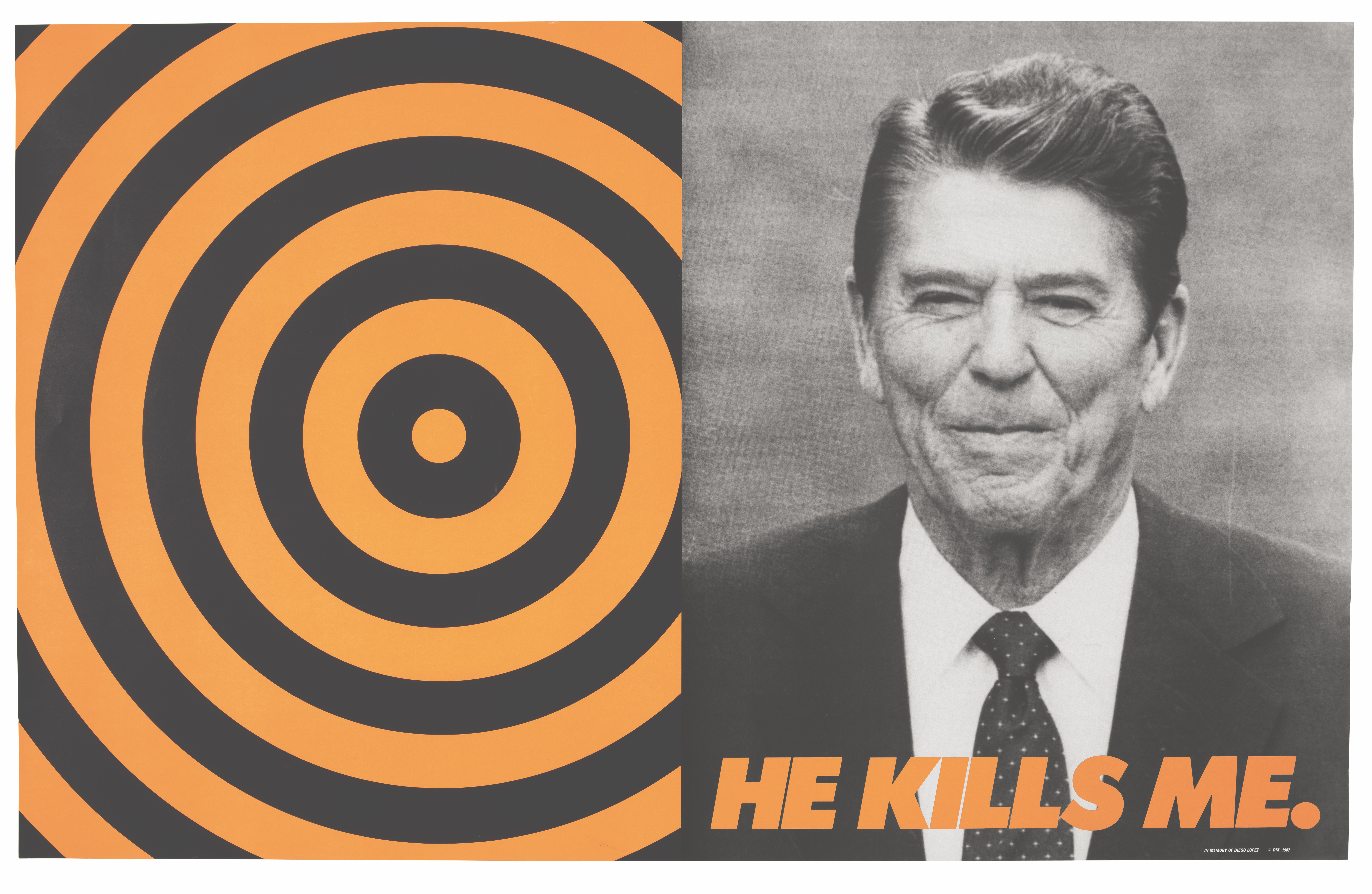
More amusing or tender works allow to lighten the visit to the exhibition. Including photos by Jean-Baptiste Carhaix (1946-2023), principal of the French American Bilingual School in San Francisco from 1981 to 1983 and photographer. He met the Sisters of Perpetual Indulgence group, founded in April 1979, which carried out militant actions by dressing up to parody dog beauty contests or sporting events for the benefit of the fight against HIV / AIDS. It is to him that we owe the startling portrait of this false good sister (Sister Sadie the Rabbi Lady) holding a placard” thank god i’m gay “.
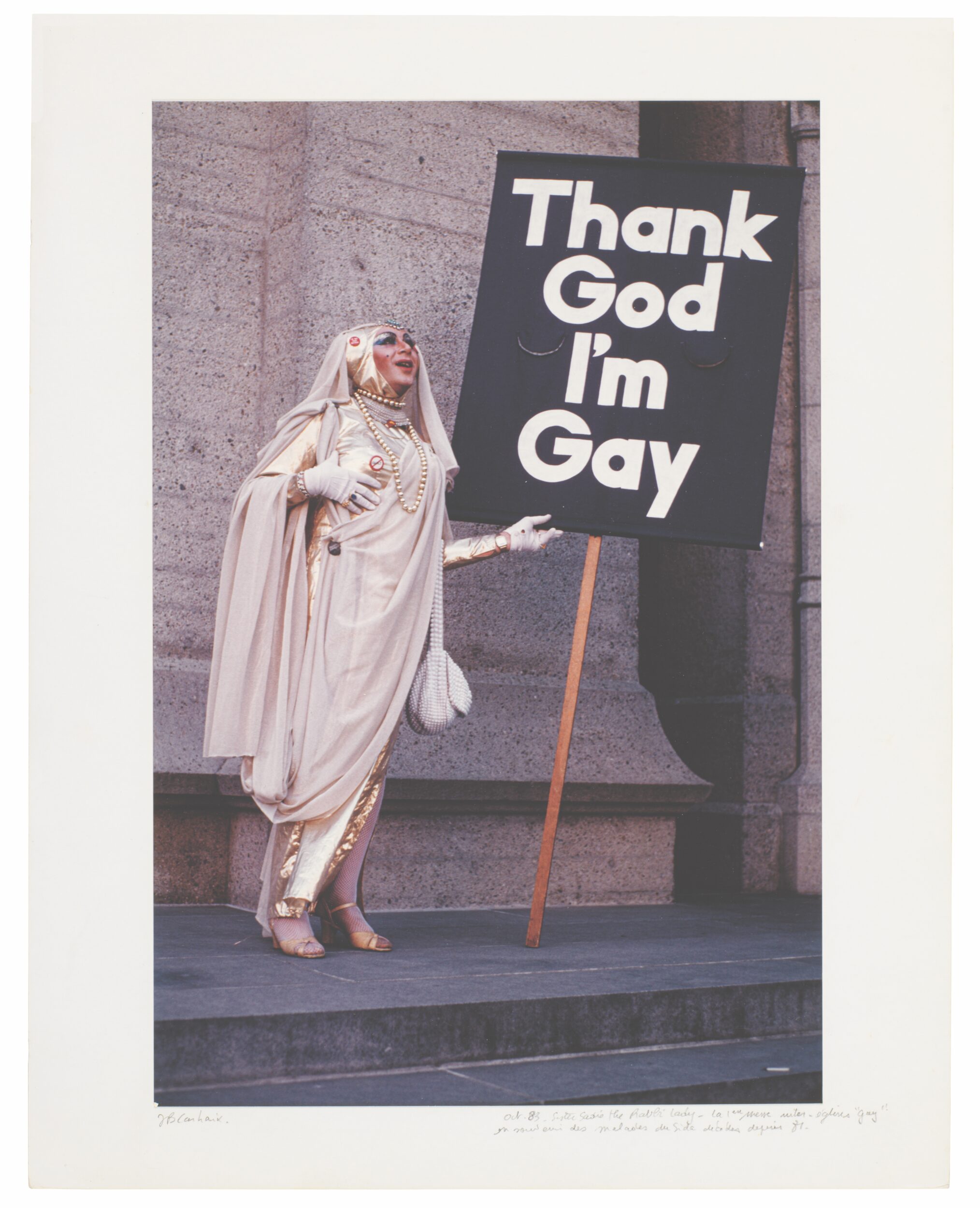
It is also with humor and tenderness that the collective of lesbian artists and activists fierce pussy, founded in 1991 in New York, exhibits posters in the streets of the capital with a DIY aesthetic conceived as an ethical line. Made in haste with a typewriter and photocopier, their works restore lesbophobic stigmas such as ” dam » which could be translated as « dam “. More than a sexual orientation, it is a political identity that they proudly claim in the public space.
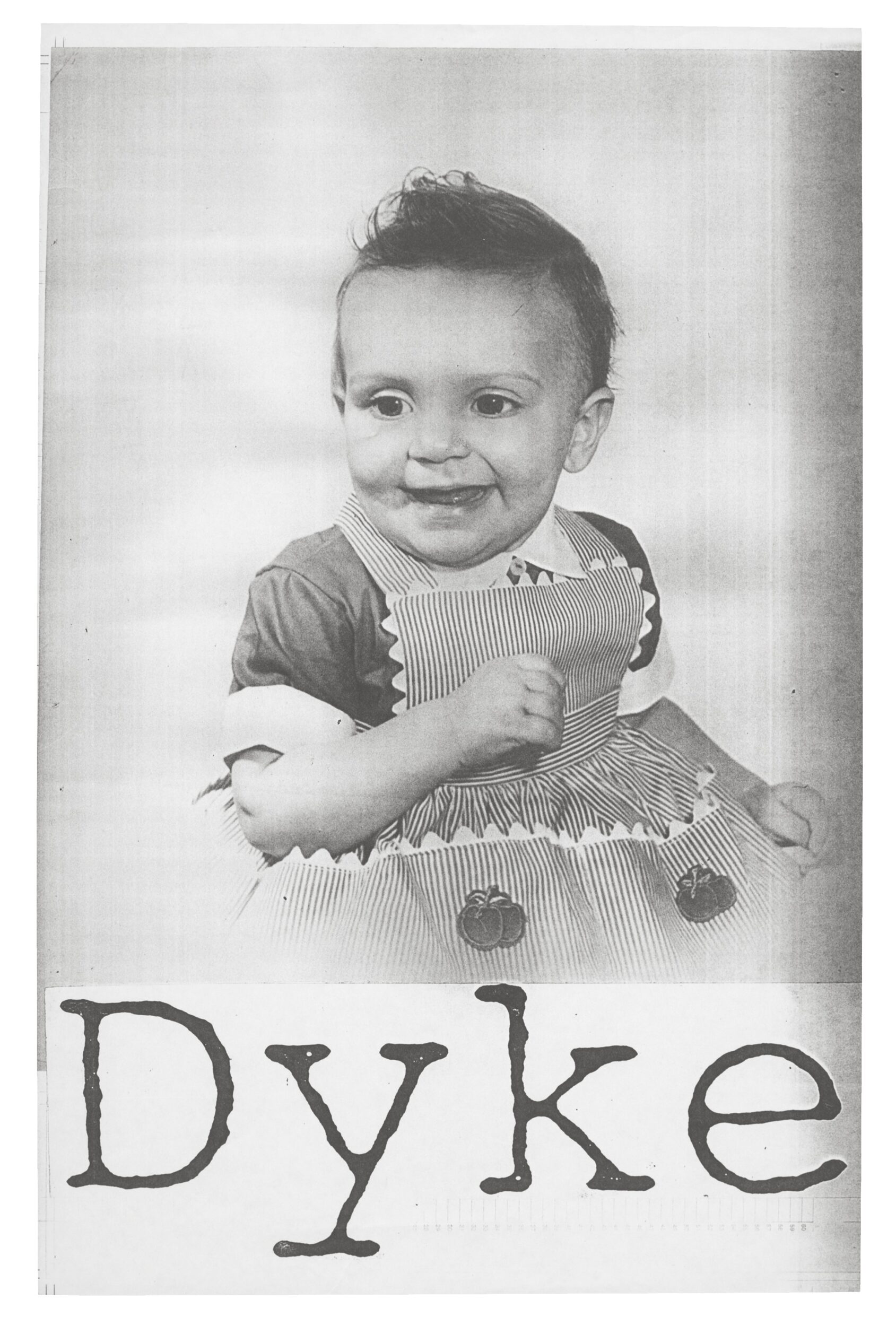
Brief but intense, this exhibition therefore presents an excellent example of how representations of gender identities and minority sexualities have been transformed, reappropriated by artists who wish to reclaim them with pride. From the beginning of the XXAnd century to the present, through the genre-loving Roaring Twenties, and especially the HIV/AIDS epidemic that serves as the political and artistic catalyst for LGBT+ struggles,” Over the Rainbow it allows us to remind ourselves that Netflix did not invent the importance of queer representations, and it plants so many seeds that we can then decide to cultivate by discovering all these talented and committed artists for ourselves. .
At a time when LGBTphobic violence is on the rise and the far right would like us to believe that our existence is a new decadent whim fruit of ” wokismo », it seems all the more important and almost therapeutic that an institution like the Center Pompidou is holding this exhibition. And may it allow everyone to see that many beautiful things have been happening for a long time over the rainbow.
“Over the Rainbow” exhibition, from 28 June to 13 November 2023, Gallery 4, level 1 of the Center Pompidou (Place Georges-Pompidou, 75004 Paris).
More articles about
Rights of LGBTQI+ people
-
How to military without running out? This book deciphers the new forms of engagement
-
For an LGBT+ flag in the window, a homophobe kills a shopkeeper in California
-
These lesbians have marked the history of France and you may have never heard of them
-
The International Chess Federation wants to exclude trans women from its competitions
-
After measures against lesbian couples, Italy attacks surrogacy
Source: Madmoizelle
Mary Crossley is an author at “The Fashion Vibes”. She is a seasoned journalist who is dedicated to delivering the latest news to her readers. With a keen sense of what’s important, Mary covers a wide range of topics, from politics to lifestyle and everything in between.



